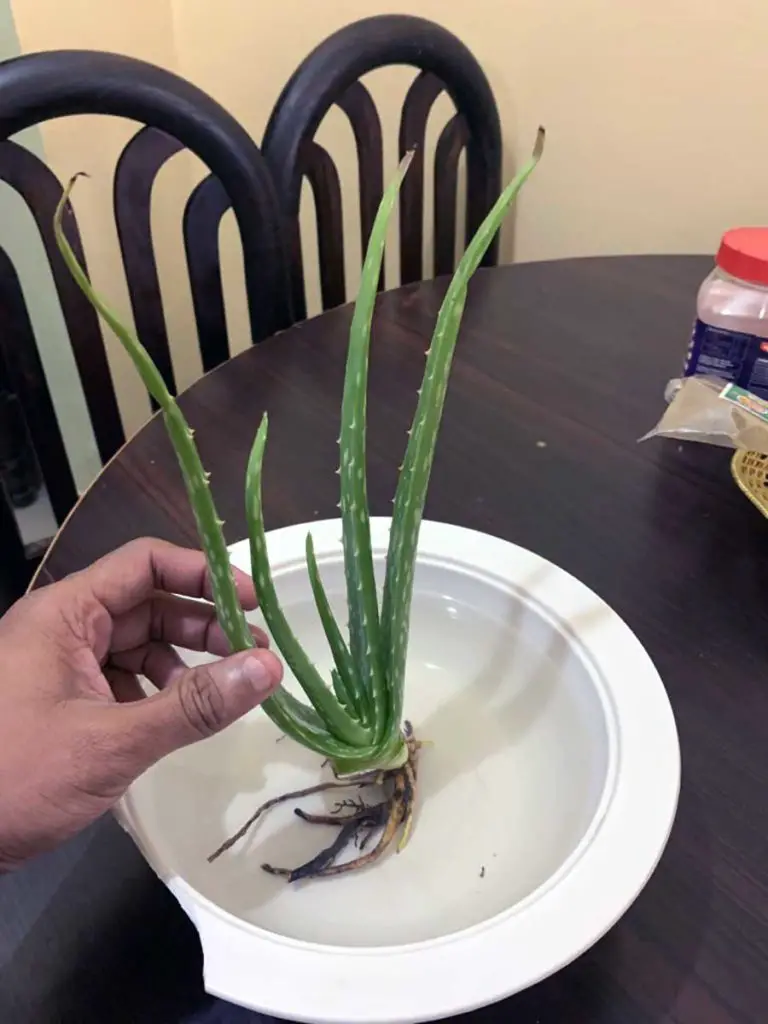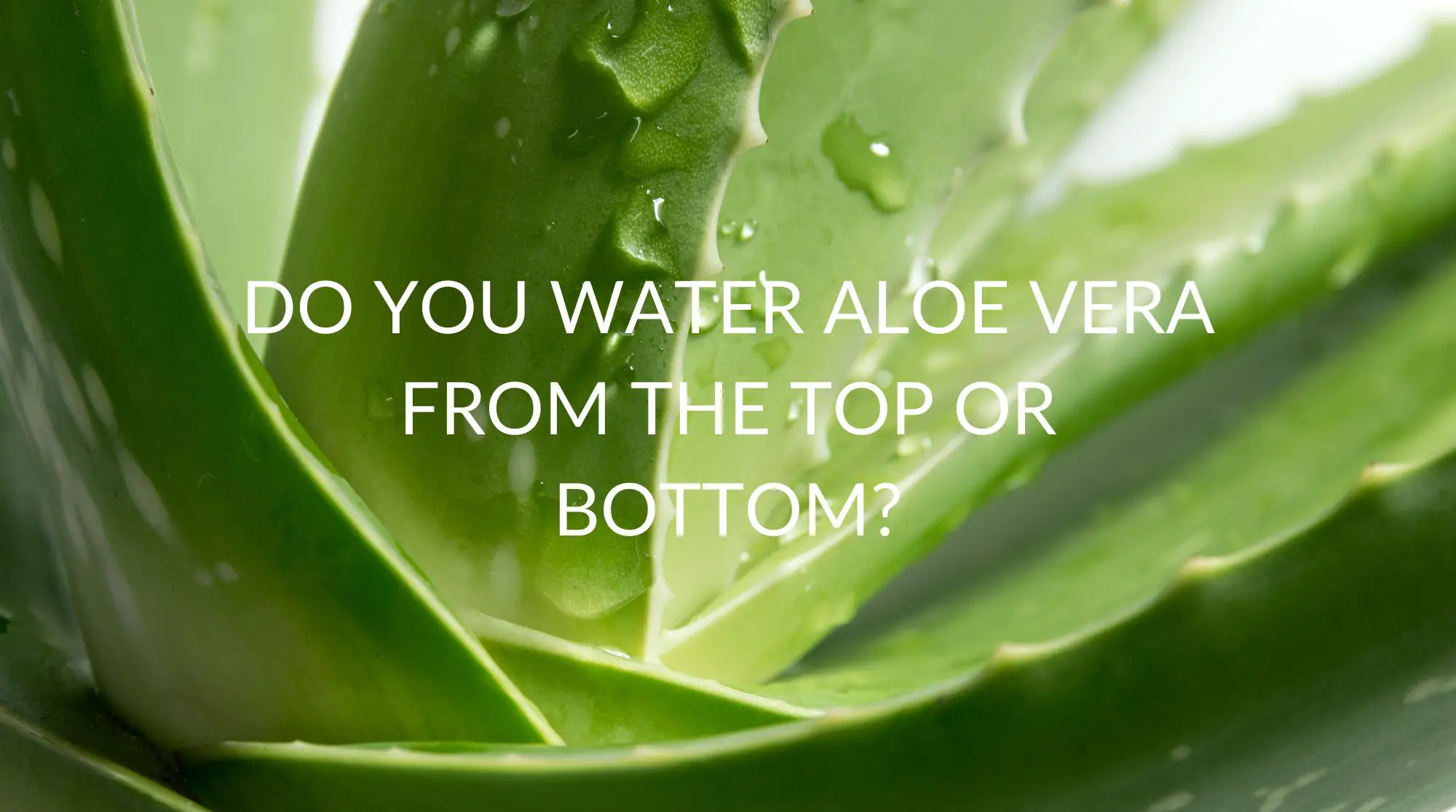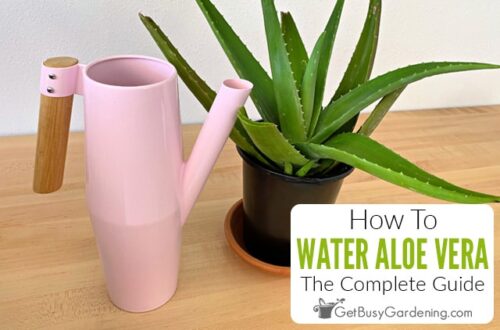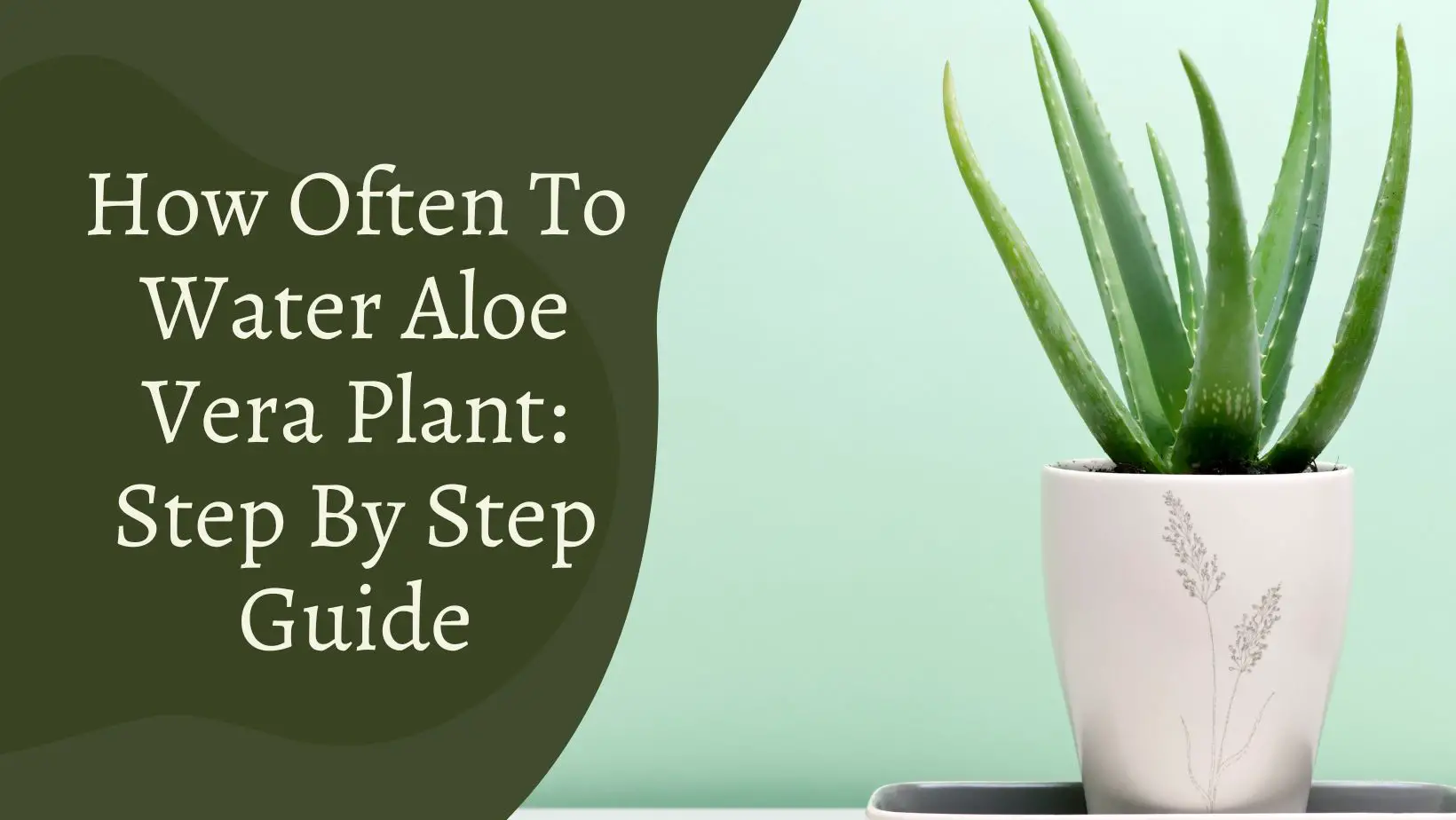Understanding Aloe Vera’s Unique Watering Needs
Aloe vera plants are known for their low-maintenance requirements, but watering is one aspect that requires attention to detail. The question of whether to water aloe vera from the top or bottom is a common concern among plant enthusiasts. To answer this, it’s essential to understand the unique watering needs of aloe vera plants. Aloe vera’s thick, fleshy leaves store water, making them sensitive to excessive moisture. Overwatering can lead to root rot, while underwatering can cause the leaves to shrivel and lose their vibrant green color.
The key to successful watering lies in finding the right balance. Aloe vera plants prefer well-draining soil and should be watered sparingly, allowing the soil to dry out completely between waterings. This is especially important during the winter months when the plant is dormant. Watering from the bottom can help prevent fungal diseases that thrive in moist environments. On the other hand, watering from the top can be beneficial for plants with severe soil dryness, but it’s crucial to avoid getting water on the leaves to prevent rot.
So, do you water aloe vera from the top or bottom? The answer depends on the specific needs of your plant. By understanding the unique watering requirements of aloe vera, you can develop a watering routine that promotes healthy growth and prevents common problems. In the next section, we’ll explore the benefits of watering aloe vera from the bottom up.
How to Water Your Aloe Vera Plant from the Bottom Up
Watering aloe vera from the bottom is a technique that offers several benefits, including reduced risk of fungal diseases and improved soil moisture. This method involves placing the pot in a saucer or tray filled with water, allowing the plant to absorb moisture through the drainage holes. By watering from the bottom, you can avoid getting water on the leaves, which can help prevent rot and other problems.
To water your aloe vera plant from the bottom, start by filling a saucer or tray with water to a depth of about 1-2 inches. Place the pot in the saucer, making sure that the drainage holes are submerged in water. Allow the plant to sit in the water for 10-15 minutes, or until the soil is moist but not waterlogged. Then, remove the pot from the saucer and discard any excess water.
Watering from the bottom can be especially beneficial for aloe vera plants that are prone to fungal diseases, such as root rot. By avoiding the leaves and focusing on the soil, you can help prevent the spread of disease and promote healthy growth. Additionally, this method can help improve soil moisture, which is essential for aloe vera plants that prefer well-draining soil.
When deciding whether to water your aloe vera from the top or bottom, consider the specific needs of your plant. If you’re unsure, start by watering from the bottom and adjust as needed. Remember to always monitor the soil moisture and adjust your watering schedule accordingly.
The Pros and Cons of Watering Aloe Vera from the Top
Watering aloe vera from the top can be a convenient and efficient way to provide your plant with the moisture it needs. However, this method also has its drawbacks. One of the main risks of top watering is washing away soil and nutrients, which can lead to deficiencies and poor plant growth. Additionally, getting water on the leaves can cause rot and other problems, especially if the plant is prone to fungal diseases.
On the other hand, top watering can be beneficial for aloe vera plants that are experiencing severe soil dryness. In this case, watering from the top can help to quickly replenish the soil moisture and prevent the plant from suffering. However, it’s essential to be cautious and avoid getting water on the leaves to prevent rot and other problems.
When deciding whether to water your aloe vera from the top or bottom, consider the specific needs of your plant. If your plant is experiencing severe soil dryness, top watering may be the best option. However, if you’re looking to reduce the risk of fungal diseases and improve soil moisture, watering from the bottom may be a better choice.
Ultimately, the decision to water your aloe vera from the top or bottom depends on your plant’s individual needs and your personal preference. By understanding the pros and cons of each method, you can make an informed decision and develop a watering routine that works best for your plant.
Signs Your Aloe Vera Plant is Getting Too Much or Too Little Water
Aloe vera plants are sensitive to watering, and it’s essential to monitor their condition to ensure they’re receiving the right amount of moisture. Overwatering and underwatering can both cause problems, so it’s crucial to recognize the signs of each.
Signs of overwatering include leaf discoloration, softening, and drooping. If the leaves are turning yellow or brown, it may be a sign that the plant is receiving too much water. Additionally, if the leaves are soft and mushy to the touch, it’s likely that the plant is waterlogged. In severe cases, overwatering can cause the roots to rot, leading to the death of the plant.
On the other hand, underwatering can cause the leaves to shrivel and become brittle. If the leaves are dry and cracked, it may be a sign that the plant is not receiving enough water. Additionally, if the plant is not producing new growth or is becoming stunted, it may be a sign that it’s not receiving enough moisture.
So, do you water aloe vera from the top or bottom? The answer depends on the specific needs of your plant. By monitoring the signs of overwatering and underwatering, you can adjust your watering schedule to ensure your plant is receiving the right amount of moisture.
Adjusting your watering schedule based on the signs of overwatering and underwatering is crucial to maintaining a healthy aloe vera plant. By paying attention to the condition of your plant and adjusting your watering schedule accordingly, you can help prevent problems and ensure your plant thrives.
Aloe Vera Watering Frequency: How Often to Water Your Plant
The frequency of watering aloe vera plants depends on several factors, including climate, soil type, and pot size. In general, aloe vera plants prefer to dry out slightly between waterings, but the frequency of watering will vary depending on the specific conditions.
In hot and dry climates, aloe vera plants may need to be watered more frequently, as the soil can dry out quickly. In cooler and more humid climates, aloe vera plants may require less frequent watering. Additionally, the type of soil used can also impact the watering frequency, as some soils may retain more moisture than others.
As a general guideline, aloe vera plants in small pots (less than 6 inches in diameter) may need to be watered every 7-10 days, while plants in larger pots (more than 6 inches in diameter) may need to be watered every 10-14 days. However, this is just a rough estimate, and the specific watering needs of your plant will depend on the conditions it is growing in.
It’s also important to consider the time of year when determining the watering frequency. During the spring and summer months, aloe vera plants are actively growing and may require more frequent watering. During the fall and winter months, aloe vera plants are dormant and may require less frequent watering.
So, do you water aloe vera from the top or bottom? The answer depends on the specific needs of your plant, including the climate, soil type, and pot size. By understanding the factors that influence aloe vera watering frequency, you can develop a watering routine that meets the unique needs of your plant.
Watering Aloe Vera in Different Seasons: A Guide to Adjusting Your Schedule
Aloe vera plants have different watering needs depending on the season. During the spring and summer months, aloe vera plants are actively growing and require more frequent watering. In contrast, during the fall and winter months, aloe vera plants are dormant and require less frequent watering.
During the spring and summer months, aloe vera plants may need to be watered every 7-10 days, depending on the climate and soil type. In hot and dry climates, aloe vera plants may need to be watered more frequently, while in cooler and more humid climates, they may require less frequent watering.
During the fall and winter months, aloe vera plants may only need to be watered every 4-6 weeks, depending on the climate and soil type. It’s essential to reduce watering during this time, as aloe vera plants are more susceptible to root rot and other problems when the soil is too moist.
So, do you water aloe vera from the top or bottom? The answer depends on the specific needs of your plant, including the season. By adjusting your watering schedule according to the season, you can ensure your aloe vera plant receives the right amount of moisture and thrives.
When adjusting your watering schedule, it’s also essential to consider the temperature and humidity levels in your area. Aloe vera plants prefer temperatures between 65-80°F (18-27°C) and humidity levels between 40-60%. By providing your aloe vera plant with the right environment and adjusting your watering schedule accordingly, you can help it thrive and enjoy its many benefits.
Tips for Watering Aloe Vera in Small Pots or Containers
Watering aloe vera plants in small pots or containers requires special care to ensure the soil doesn’t become too dry or waterlogged. Here are some tips to help you water your aloe vera plant in a small pot:
Use a shallow water tray: Place the pot in a shallow water tray or saucer to allow the plant to absorb water from the bottom up. This will help prevent the soil from becoming too wet and reduce the risk of root rot.
Monitor soil moisture: Check the soil moisture daily by sticking your finger into the soil up to the first knuckle. If the soil feels dry, it’s time to water. If it’s already moist, wait another day or two before watering again.
Water sparingly: Aloe vera plants in small pots or containers require less water than those in larger pots. Water sparingly, making sure not to overwater, which can lead to root rot and other problems.
Avoid getting water on the leaves: When watering your aloe vera plant in a small pot, avoid getting water on the leaves to prevent rot and other problems. Instead, water at the soil level, making sure the pot drains well to prevent waterlogged soil.
So, do you water aloe vera from the top or bottom? The answer depends on the specific needs of your plant, including the size of the pot. By following these tips, you can ensure your aloe vera plant in a small pot or container receives the right amount of water and thrives.
Common Mistakes to Avoid When Watering Your Aloe Vera Plant
Watering an aloe vera plant can be a bit tricky, and it’s easy to make mistakes that can harm the plant. Here are some common mistakes to avoid when watering your aloe vera plant:
Overwatering: This is one of the most common mistakes people make when watering their aloe vera plants. Overwatering can lead to root rot, which can be fatal to the plant. Make sure to check the soil moisture before watering, and avoid getting water on the leaves.
Underwatering: On the other hand, underwatering can also be harmful to the plant. Aloe vera plants need some water to survive, so make sure to water them regularly. However, avoid overwatering, as this can lead to root rot.
Getting water on the leaves: Aloe vera plants are sensitive to water on their leaves, which can cause rot and other problems. When watering your aloe vera plant, make sure to avoid getting water on the leaves. Instead, water at the soil level, making sure the pot drains well to prevent waterlogged soil.
Not monitoring soil moisture: Failing to monitor soil moisture can lead to overwatering or underwatering. Make sure to check the soil moisture regularly, and adjust your watering schedule accordingly.
So, do you water aloe vera from the top or bottom? The answer depends on the specific needs of your plant. By avoiding these common mistakes, you can develop a successful watering routine that will help your aloe vera plant thrive.
Remember, patience and observation are key to developing a successful watering routine. By paying attention to your plant’s needs and adjusting your watering schedule accordingly, you can help your aloe vera plant thrive and enjoy its many benefits.







